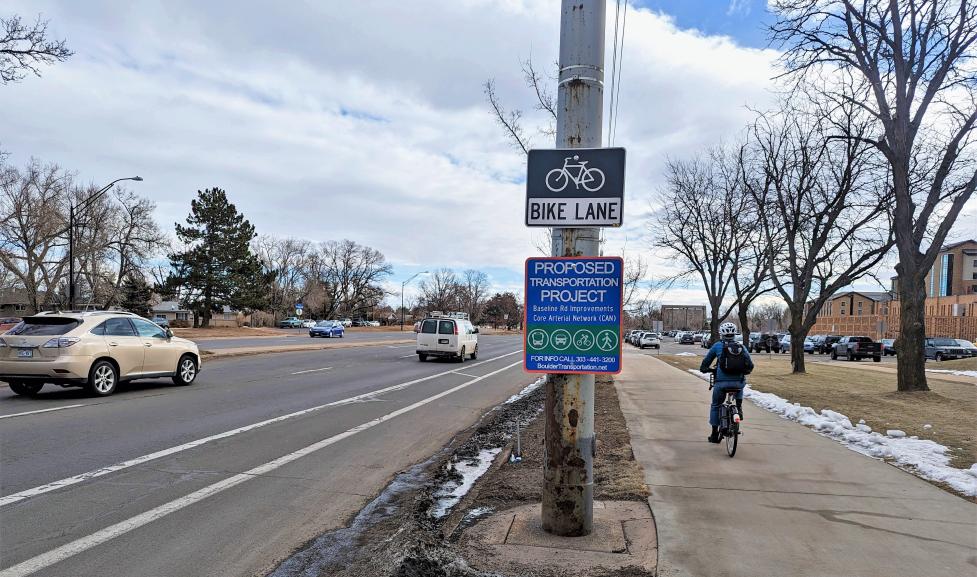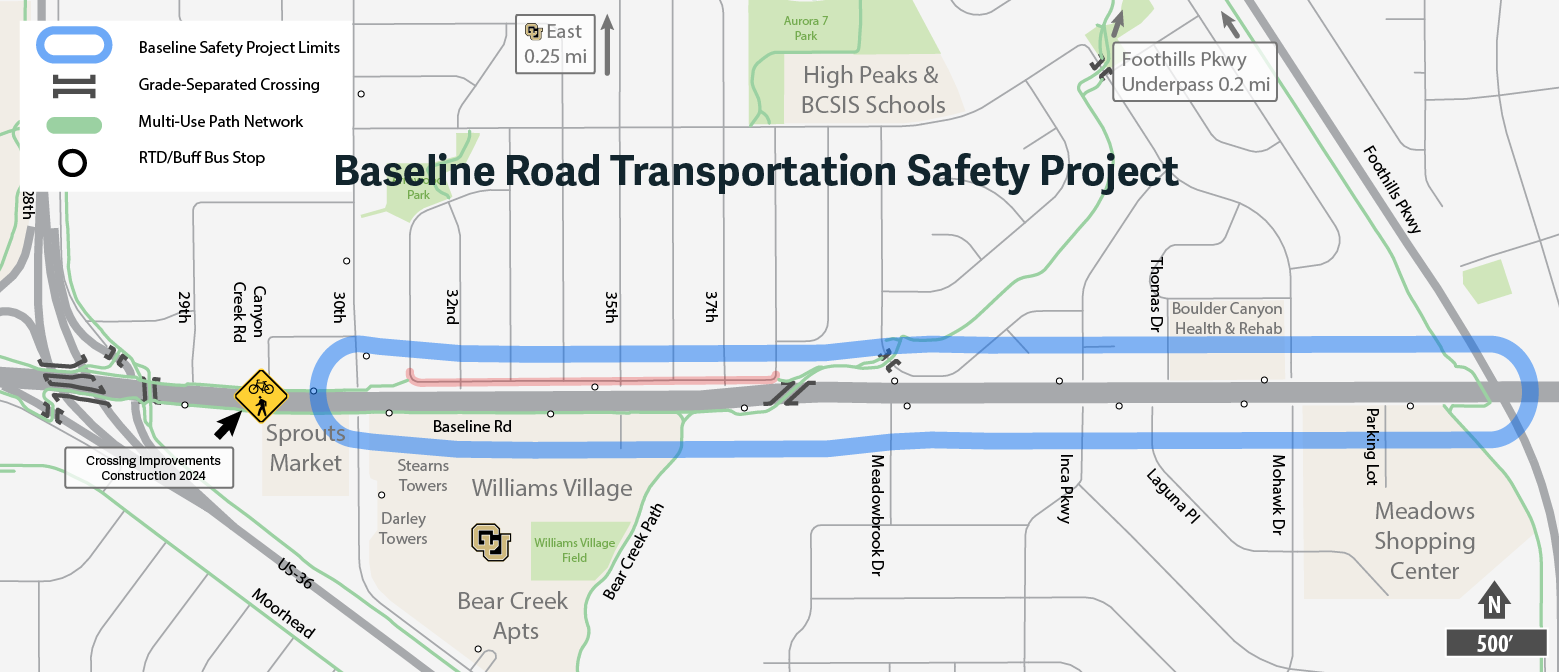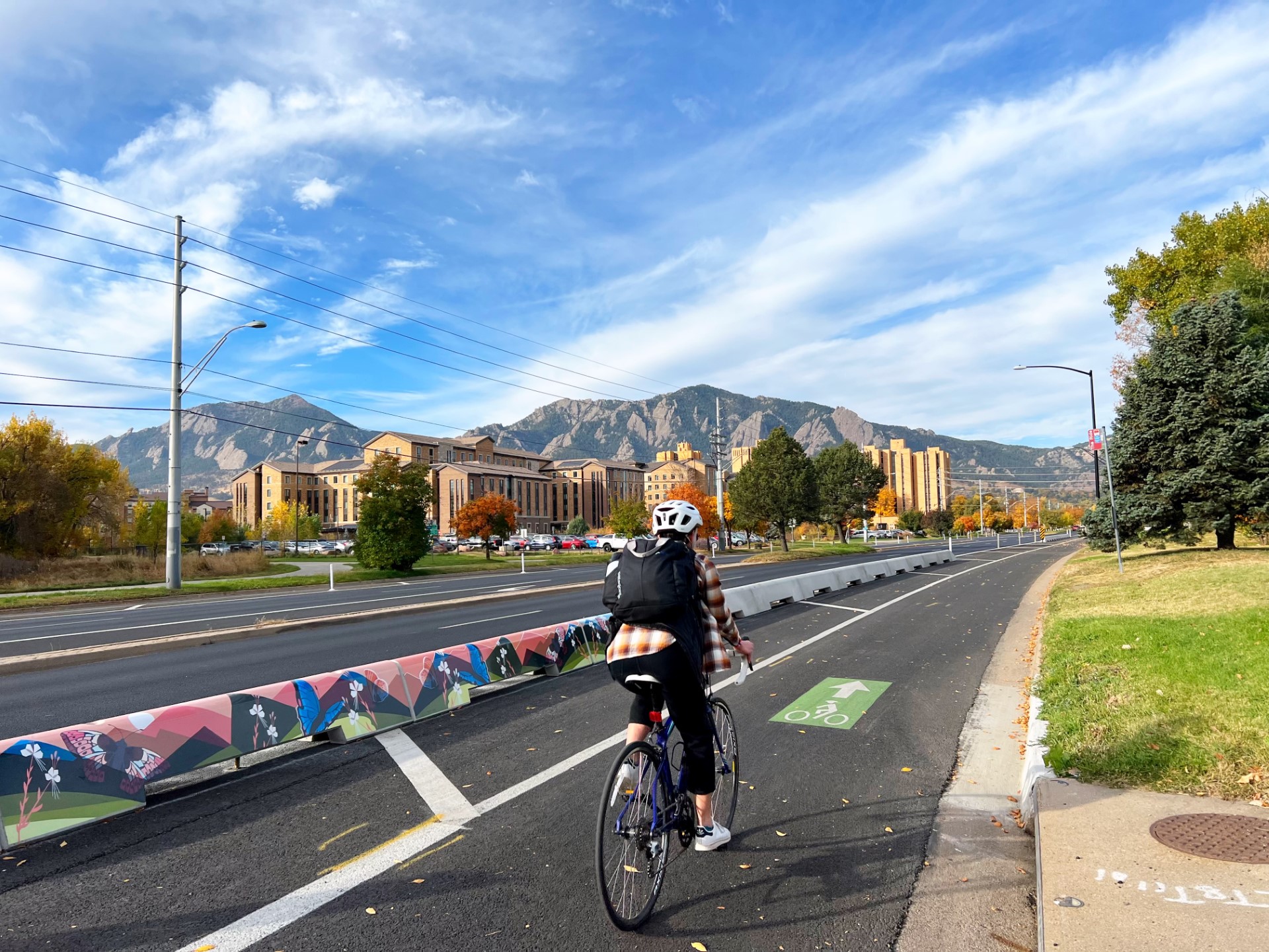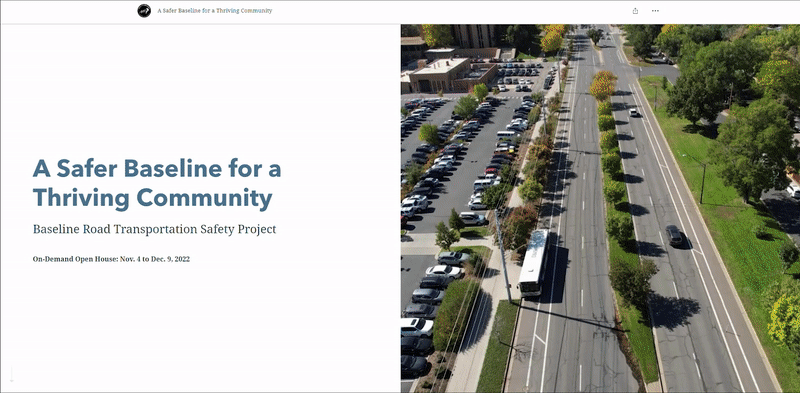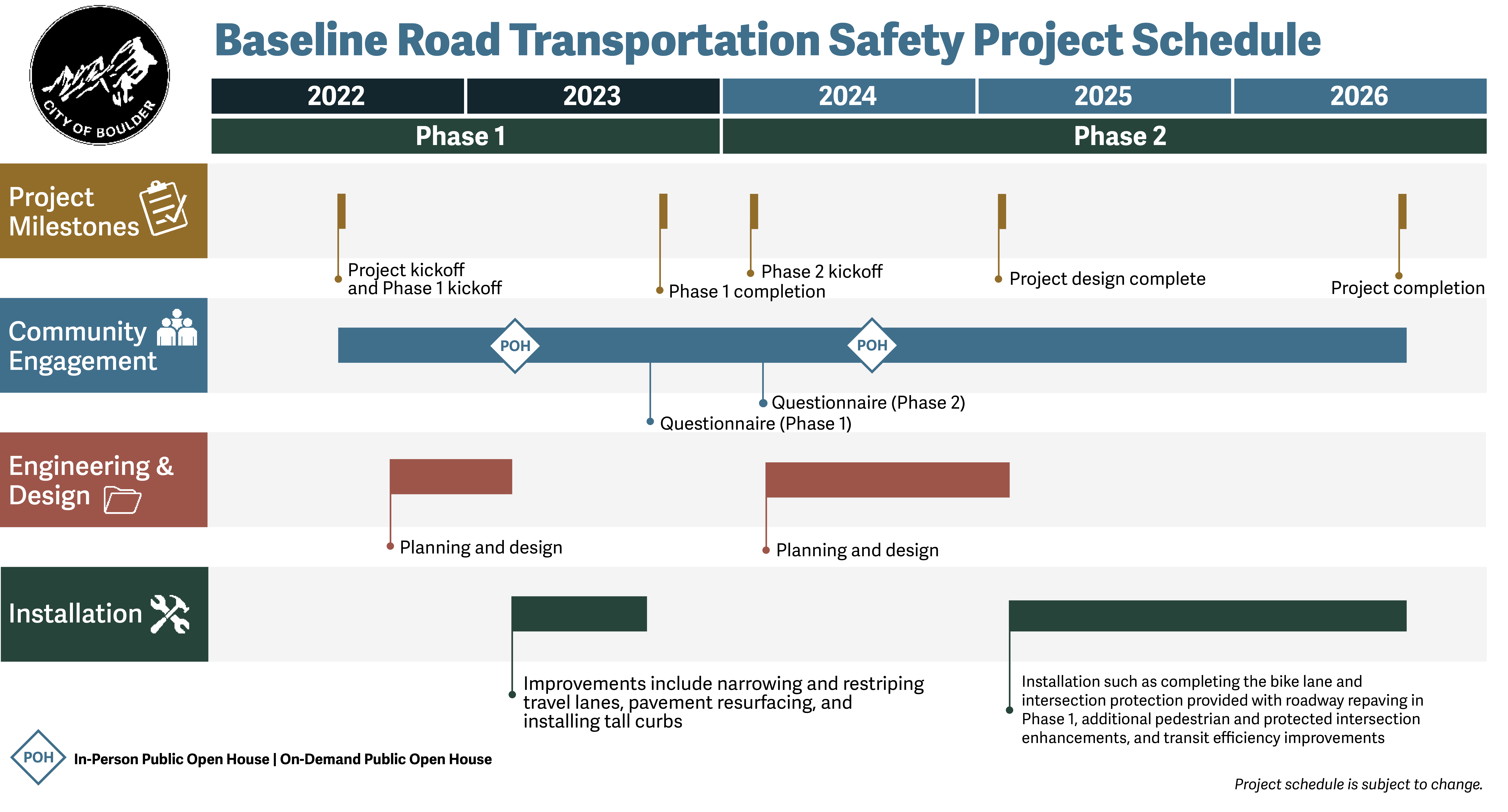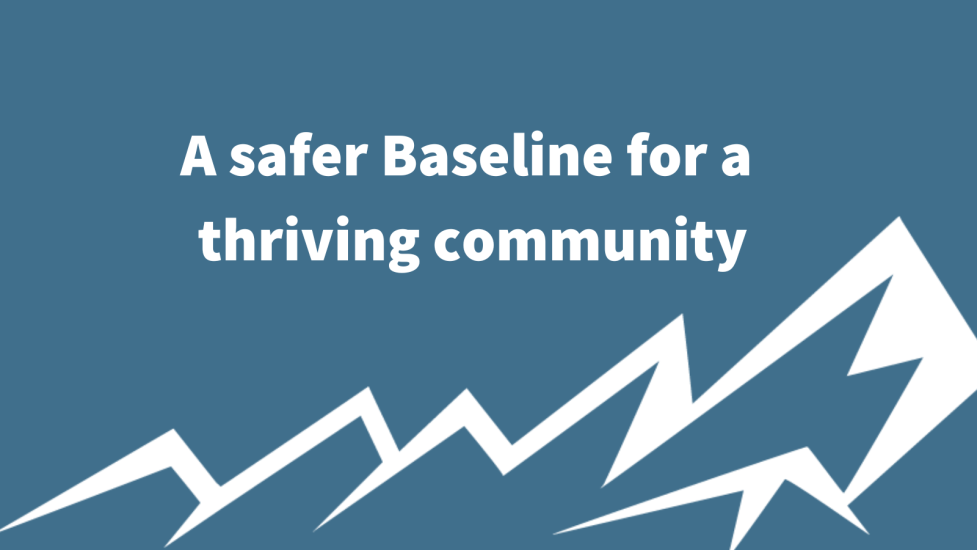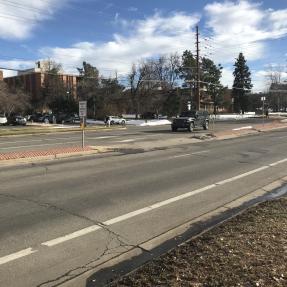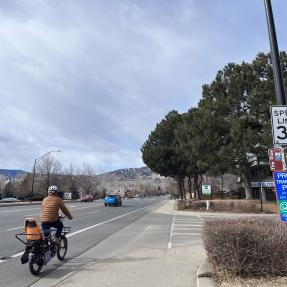Project Overview
The Baseline Road Transportation Safety Project is a multi-year project focused on improving safety along Baseline Road, one of the city’s most-traveled corridors. This section of Baseline Road — from 30th Street to Foothills Parkway — is home to many key community destinations and services, including affordable housing, grocery stores, shops, health centers, and student housing for the University of Colorado Boulder.
According to the city's 2022 Safe Streets Report, this section of Baseline Road is one of the top 10 crash locations for people walking and bicycling in the city and was identified in the Denver Regional Council of Government's Regional High Injury Network, the 9 percent of roads in the region where the majority of serious injury and fatal crashes occur. The regional High-Injury Network also identifies critical corridors, the highest-density corridors for serious injury and fatal crashes. This segment of Baseline road is also a critical corridor.
The road was also identified as a priority corridor to make improvements as part of the city's Core Arterial Network (CAN) initiative to improve safety on our high-traffic, higher-speed streets.
The CAN is the connected system of protected bicycle lanes, intersection enhancements, pedestrian facilities, and transit facility upgrades that will help reduce the potential for severe crashes and make it more comfortable and convenient for people to get where they need to go along Boulder’s main corridors. The CAN initiative is one of City Council’s top ten priorities.
